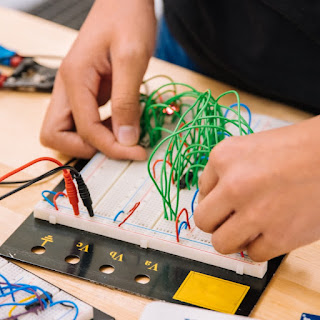Emotion Affects Deep Learning
Think back to classes in high school or college where you learned and retained that learning. The research on learning would bet that you felt positive emotion in that learning environment. You were stimulated by interesting things, thoughts, and ideas. You were challenged and attentive. You felt accomplishment and achievement. Is that accurate to the classes you thought about? It turns out that our memory is tied to emotion. Positive emotion in the learning environment helps us develop durable, persistent knowledge. According to Sarah Rose Cavanagh, scholar in affective science, in her book The Spark of Learning: Energizing the College Classroom with the Science of Emotion, there is a long-held belief that emotion and cognition (thinking) are separate and potentially at odds with each other; but actually the “neural mechanisms underlying emotion, motivation, and learning are so intertwined.” She suggests that to motivate and educate our students, “there is no better approach than to target their emotions.”
Negative emotion does the opposite and blocks our learning. Our brains perceive negative emotion as a threat, so reducing negative emotions equates to minimizing threats. An example of a “threat” in the learning environment is a final course grade heavily weighted by only two exams. In the eyes of a student this is a due or die situation and the student might think, “If I mess up on one of these, there goes my entire grade.” This negative emotion is demotivating because it is perceived by the mind as a threat event.
High stakes = high stress ≠ durable learning
In his keynote address at Canvas Caravan HE, Southwest, Jared Stein, the VP of Higher Education Strategy for Instructure, discussed ideas to leverage emotion to increase learning. To first reduce negative emotions in the learning environment Stein suggests sequentially organized learning modules (rather than by subject) for students to progress through, specific instructions and examples in assignments to reduce uncertainty, and communicating transparently about requirements and grading to allay anxiety. These methods are producers of a positive emotional climate.
A similar take on this idea of positive emotion and learning is John Medina's work on attention and memory. Medina’s book, Brain Rules, offers another way to create positive emotion in the learning process. Medina’s research suggests that attention wanes every 10 minutes and must be recaptured by “baiting the hook” with our learners–in other words, grabbing their attention. Attention or curiosity is captured in countless ways by introducing a problem or challenge to be solved, asking a question, or offering a startling statistic or compelling story. Learning outcomes (course competencies) can even be turned into questions and sprinkled throughout the content. The retrieval practice of recalling small bits of information can also be sprinkled throughout the content. Simple retrieval practice reinforces learning and helps build confidence in acquired knowledge–which is a positive emotion!
Now, let’s bring the focus back to the classes we teach. Do students feel positive emotions there? Paying attention to this may be the most important aspect of learning to attend to. Public speakers and thought leaders already know this which is why they draw us in with relevant examples, stories and connections to our lives. We remember things tied to emotion. Please comment and offer stories below about a class you remember and learned from.

Comments
Post a Comment